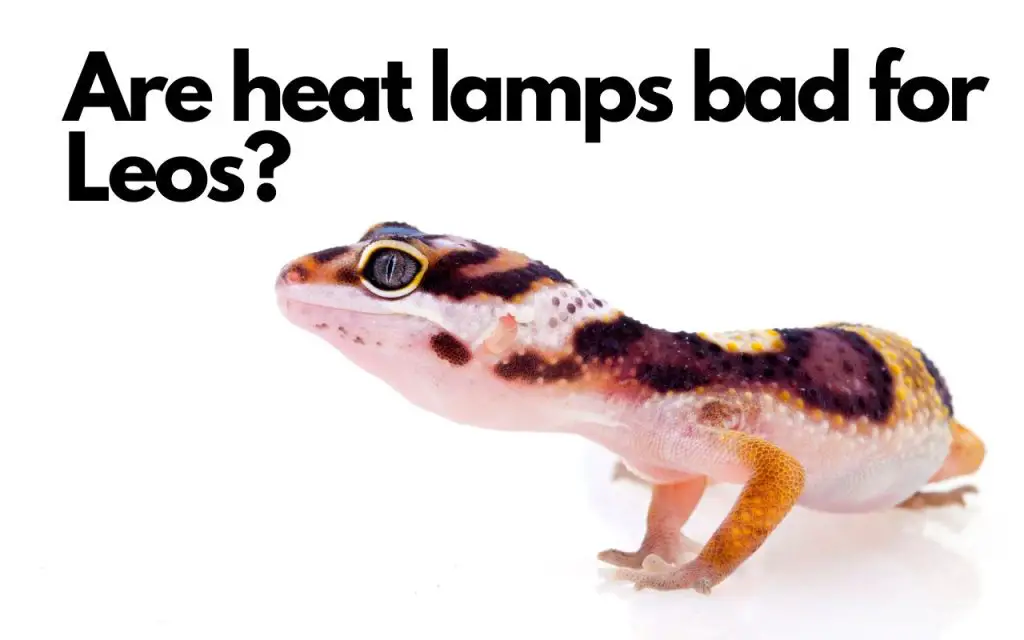Leopard Geckos are cathemeral (active on and off 24/7) and need a regular heat source. But what is best for them? We’re often told that heat lamps are best, but sometimes this is driven by the desire to sell us more expensive products. In fact, for some enclosure types a heat mat might be best. So let’s answer the question: Are heat lamps bad for Leopard Geckos?
In this post we’ll take a look at why they aren’t necessarily bad – you just need to use them right, and keep an eye on night time temperatures. Keep reading to find out more…
Are Red Heat Lamps Bad?
In the world of reptile care, red heat lamps, also known as infrared lamps are widely used. These lamps generate heat without emitting bright, yellow or white light. Instead, they emit a lot of heat, and subtle red glow.
It was previously believed that leopard geckos also couldn’t perceive this light, making red heat lamps a perfect solution for providing heat without disrupting their day-night cycle.
However, recent research suggests that leopard geckos may indeed perceive red light. This implies that constant exposure to red light could potentially disrupt their natural sleep patterns.
So, while red heat lamps aren’t inherently “bad,” their usage should be carefully regulated to avoid disrupting your gecko’s daily rhythms. I do not recommend using a red heat lamp at night for Leopard Geckos (or any other reptile, for that matter).
If you wish to use a heat lamp, it should always be turned off at night, whether it’s red or another color.
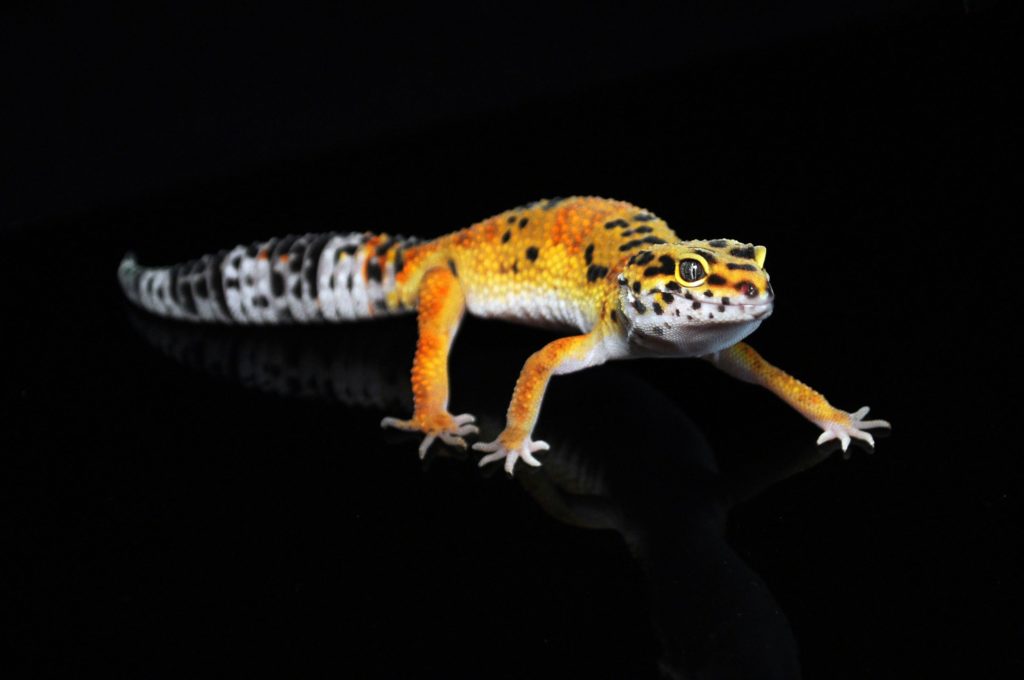
What Wattage Heat Lamp for Leopard Gecko?
The wattage of a heat lamp for your leopard gecko depends on several variables, including the size of your enclosure, the room’s ambient temperature, and the temperature gradient you aim to achieve within the enclosure.
Typically, a 50 to 75-watt bulb should suffice for most average-sized enclosures. The primary goal is to create a temperature gradient in your gecko’s habitat, with a basking spot at around 90-95°F (32-35°C) and a cooler end at 75-80°F (23-26°C).
The warm end should be around 85°F away from the basking spot.
If you’d like to learn about appropriate enclosure sizes, head over to our article on Leopard Gecko Tank Size.
Gecko Heat Lamp Thermostats
A reliable thermostat is a must-have tool for any leopard gecko owner. A thermostat will monitor the temperature of the heat source and switch it off once it hits a certain threshold. This ensures the terrarium never gets too hot and safeguards your pet from potential harm.
For heat lamps, you must use a dimming thermostat. On/off thermostats, like those commonly used for heat mats, would quickly wear the bulb out.
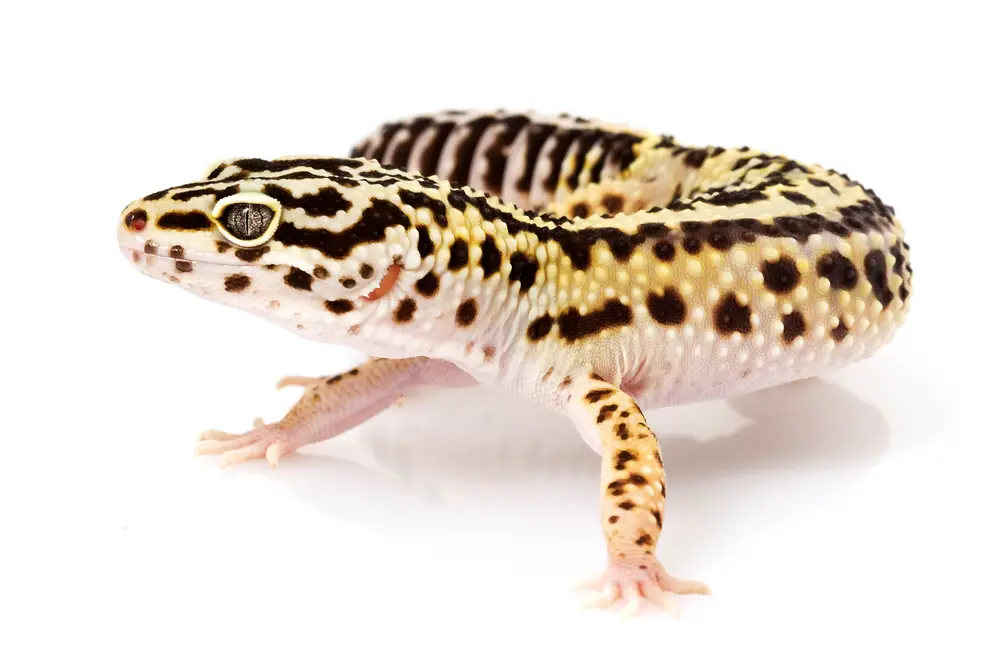
Should I Turn My Leopard Gecko’s Heat Lamp Off at Night?
Leopard geckos are cathemeral, meaning they are active at various points during the day and night. That said, they are accustomed to experiencing a drop in temperature during the night in their natural habitats.
And yes, I know every resource out there tells you they’re crepuscular, but trust me, they are active at all hours!
To mimic these conditions, it’s generally advised to turn off the heat lamp at night, provided the temperature in your house doesn’t drop below 75°F (18-21°C). Monitoring temperatures during these periods remains crucial.
An even better option is getting a heat mat or a ceramic heat emitter, and putting it on a separate thermostat. You can put them both on timers, so that the heat mat comes on at night. That way, you can still keep the warm end at 75-80°F, which is best for their health.
Obviously this is getting complicated – hence why so many of us just use heat mats or ceramic heat emitters all the time, instead of heat bulbs!
Do Leopard Geckos Need Light at Night?
Leopard geckos don’t actually require light at night. Constant light exposure can potentially disturb their sleep cycle and lead to stress. If additional heat is necessary during the night, ceramic heat emitters can be a great option since they generate heat without light.
UVB Light for Leopard Gecko
While leopard geckos receive their essential vitamin D3 and calcium primarily through their diet, recent studies suggest that providing low-level UVB light for a few hours each day can positively impact their overall health and wellbeing. When opting for UVB lighting, choose a low-output bulb and ensure your gecko has plenty of hiding spots to escape the light if they wish.
What Watt Bulb for Leopard Gecko in 10 Gallon Tank?
In a 10-gallon tank, which is typically suitable for a juvenile or a smaller adult leopard gecko, a lower wattage bulb is required to avoid overheating. A 25 to 40-watt bulb should be sufficient, but this can depend on the ambient temperature of your room.
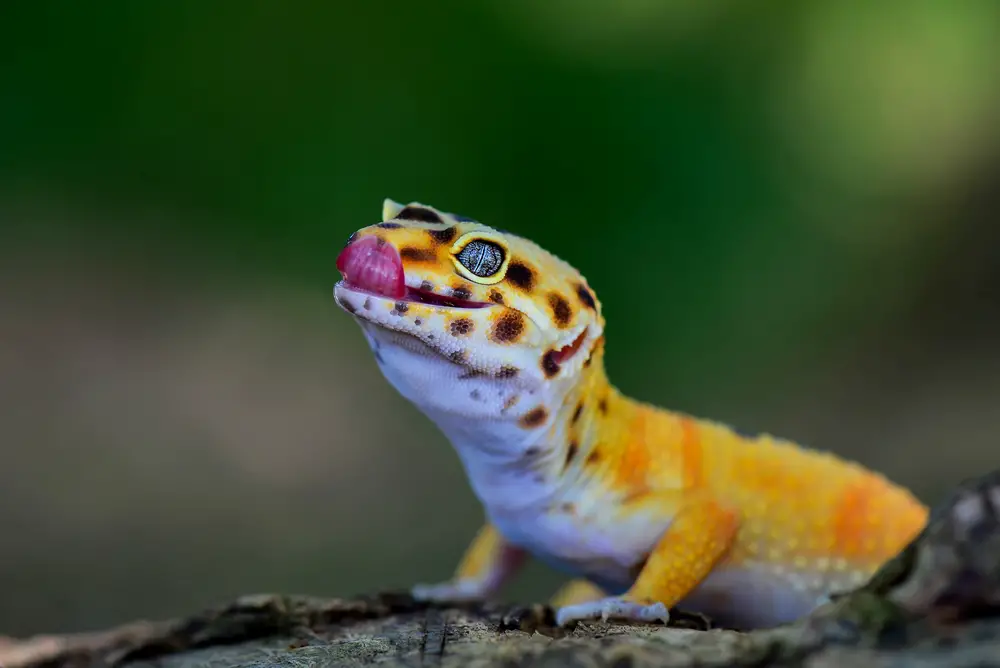
Leopard Gecko Heat Lamp Temperature
The temperature under the heat lamp, or the basking spot, should be around 90-95°F (32-35°C), while the cooler end of the tank should be between 75-80°F (23-26°C).
This temperature gradient allows your gecko to regulate its own body temperature by moving between the warmer and cooler areas of the enclosure. Accurate temperature measurement remains critical.
Pros and Cons of Heat Lamps vs Heat Mats
Next, let’s compare the two primary sources of heat used for leopard geckos: heat lamps and heat mats.
| Heat Lamps | Heat Mats |
|---|---|
| Provide overhead heat, simulating sunlight. | Offer belly heat, beneficial for digestion. |
| Create a visible basking spot. | Heat is less visible and harder to regulate. |
| Can potentially dry out the enclosure, requiring frequent humidity checks. | Less likely to affect overall tank humidity. |
| Potential light disturbance if not managed correctly. | No light disturbance, making them suitable for nocturnal, crepuscular, or cathemeral reptiles. |
| Best for vivariums/terrariums | Best for plastic tubs/faunariums |
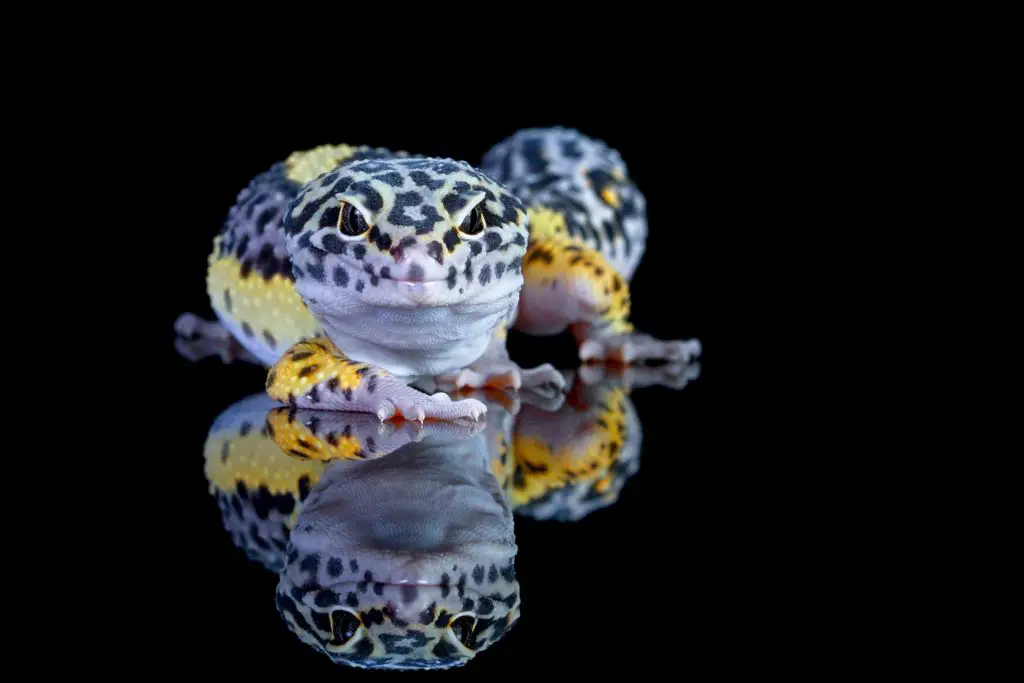
In Conclusion…
Providing the right heat source for your leopard gecko is crucial to its health and wellbeing. While heat lamps are generally safe, they need to be used properly to ensure your pet’s comfort. Always remember that each gecko and each home environment is unique, requiring regular monitoring and adjustments to maintain optimal conditions.
Always remember that any heat source must be used in conjunction with the appropriate thermostat! You should also invest in an infrared thermometer gun to double check temperatures on a regular basis.
Thank for reading! If you’d like to learn more about Leopard Gecko care, read Frank Cuzzolina’s full Leopard Gecko Husbandry guide.

